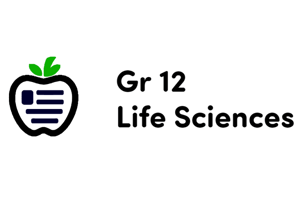Podcast
Questions and Answers
What is the primary function of chromosomes in cells?
What is the primary function of chromosomes in cells?
- To convert DNA information into protein
- To encode proteins
- To regulate the interactions between molecules or groups of cells
- To package and manage the storage, duplication, expression, and evolution of DNA (correct)
What is the result of the diversity of three-dimensional structure of proteins?
What is the result of the diversity of three-dimensional structure of proteins?
- A uniformity of protein function
- An extraordinary diversity of protein function (correct)
- No effect on protein function
- A limited range of protein function
What is the relationship between the two strands of the DNA double helix?
What is the relationship between the two strands of the DNA double helix?
- They are identical and anti-parallel
- They are complementary and parallel
- They are identical and parallel
- They are complementary and anti-parallel (correct)
What is the role of RNA in the conversion of DNA information into protein?
What is the role of RNA in the conversion of DNA information into protein?
What is the total number of base pairs in the human genome?
What is the total number of base pairs in the human genome?
What is the number of different amino acids that make up proteins?
What is the number of different amino acids that make up proteins?
What is the primary function of DNA in cells?
What is the primary function of DNA in cells?
What is the result of the hydrogen bonding between the two strands of the DNA double helix?
What is the result of the hydrogen bonding between the two strands of the DNA double helix?
What is the relationship between the sequence of amino acids and the type of protein?
What is the relationship between the sequence of amino acids and the type of protein?
What is the role of RNA in the evolution of biological information on earth?
What is the role of RNA in the evolution of biological information on earth?
Study Notes
Chromosomes and Their Function
- Chromosomes store and manage genetic information within cells, ensuring proper cell division and inheritance of traits.
- They consist of tightly coiled DNA, which carries the instructions for various cellular functions.
Diversity of Protein Structures
- The three-dimensional structure of proteins results from their unique amino acid sequences and interactions, enabling a range of functions.
- Specific structural forms allow proteins to bind to other molecules, catalyze reactions, or provide cellular support.
DNA Double Helix
- The two strands of the DNA double helix are complementary, meaning that adenine pairs with thymine and cytosine pairs with guanine.
- This complementary nature ensures accurate replication and repair of genetic information.
Role of RNA in Protein Synthesis
- RNA serves as a messenger, transferring genetic information from DNA to ribosomes, where proteins are synthesized.
- Messenger RNA (mRNA) carries the code for a specific protein, while transfer RNA (tRNA) and ribosomal RNA (rRNA) are essential for translation.
Human Genome
- The human genome contains approximately 3 billion base pairs of DNA, which encode the genetic instructions for human development and function.
Amino Acids in Proteins
- Proteins are composed of 20 different amino acids, which combine in various sequences to form diverse protein structures with specific functions.
Function of DNA in Cells
- DNA's primary function is to store and transmit genetic information, serving as a template for replication and expression.
- It governs cell function, growth, and development by directing the synthesis of proteins.
Hydrogen Bonding in DNA
- Hydrogen bonds between complementary bases stabilize the DNA double helix structure, allowing it to maintain its shape and function.
- These bonds are crucial for the DNA's ability to unzip during replication and transcription while maintaining overall integrity.
Sequence of Amino Acids and Protein Type
- The sequence of amino acids in a protein determines its specific characteristics, including structure, function, and interactions with other biomolecules.
- Variations in the amino acid sequence can lead to different protein folding and function, influencing the organism's traits.
RNA and Biological Evolution
- RNA played a crucial role in the early evolution of life forms by acting as both genetic material and catalysts (ribozymes) facilitating biochemical reactions.
- It continues to be essential in the transfer of genetic information and regulation of gene expression across various life forms.
Studying That Suits You
Use AI to generate personalized quizzes and flashcards to suit your learning preferences.
Description
Explore the fundamental concepts of genetics, including the three levels of biological information: DNA, proteins, and biological systems. Learn how DNA sequence determines amino acid sequence and how biological information generates diversity in living organisms.




